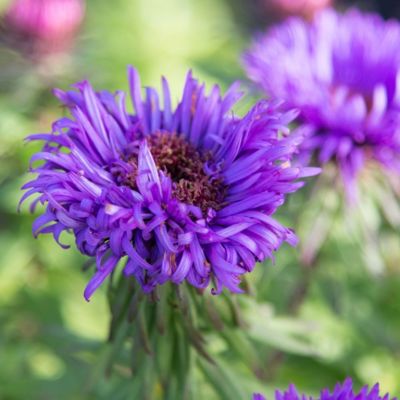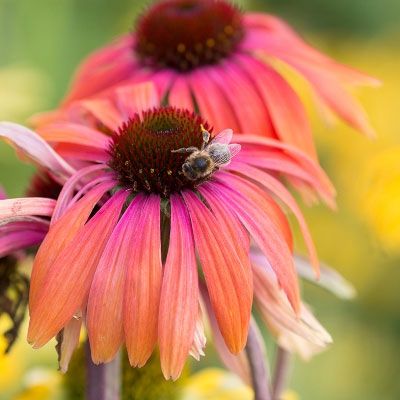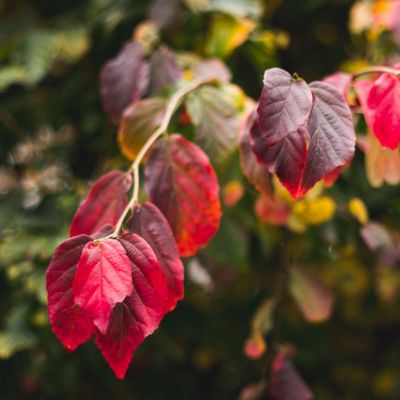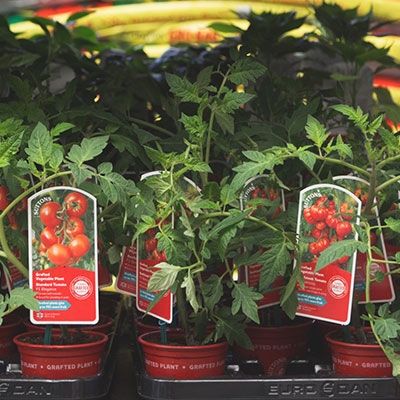10.2025 - October Gardening Tips

Temperatures are slowly dipping away, winds are increasing in strength and nights are drawing in. This can signify only one thing: autumn has well and truly arrived.
As the nights do start to draw in and the seasons inevitably change, we find it instinctive to move about far less. Whilst it may feel tempting to draw the curtains, light the fire and relax in the warmth, we'd recommend not doing so yet because there's still lots to do in the garden.
In the Garden This Month
October is a month for tidying up, harvesting, getting prepared for next season and making sure that everything is safe and well secured before heavy winds and cold frosts arrive. If you do anything this month then start gathering fallen leaves and placing them into a wire bin or leaf sack. Leaves can rot down and be used later as a conditioner for the soil. Often the importance of this job is overlooked, however if it's not done regularly, fallen leaves can spread disease and encourage the growth of unwanted pests.
Feed Birds
If you haven't started feeding the birds in your garden yet, then it's a really good time to start doing so. We have a huge selection of bird tables, feeding stations, feeders and food available in the garden centre. As the colder weather comes, birds will begin to rely on you for their survival. Suet balls are one of the best foods to give at this time of year because they're high in energy.
Plant Relocation
Perhaps you regret planting something in a particular area of your garden, or maybe a plant has got to big for its current position. If so, then October is a great time for plant relocation. Once dormant, plants can be carefully lifted and relocated to another area of the garden with the least amount of damage.
Plant Spring Flowering Bulbs Now
Don't leave it too late! It may seem like a long way away now but it won't be long before spring returns. If you want your garden to flourish with colour in the spring and if you haven't done so yet, then plant spring flowering bulbs now before the first frost arrives.
 Look Out For Frost
Look Out For Frost
Be vigilant and look out for frost this month. Plants can be protected with horticultural fleece or if there's anything that you think won't survive the winter, bring it inside now or place it in a heated greenhouse.
Sowing
This month, we can sow:
- Wildflower seeds into the ground to attract bees and butterflies next year.
- Hardy annuals like poached egg plant, poppies, larkspur and cornflowers directly outdoors.
- Winter lettuce, hardy peas and broad beans.
- Basil, chives, parsley and dill on your windowsill for winter herbs.
Planting
Autumn onion sets, garlic (for bigger crops next year), spring cabbages and winter lettuces can be planted directly outdoors this month.
If you have a cold frame, then you can plant spring onions and all year round cauliflowers so that they're ready for harvesting next spring.
Gardening Jobs For This Month
- Tidy up leaves.
- Harvest everything that won't survive the winter. Chutney is a great way of getting rid of unused edibles from the kitchen garden.
- Move outside plants that are susceptible to frost inside or to a warmer area - bear in mind that plants indoors will not require as much watering.
- Remove suckers growing at the base of trees.
- If you have a pond, remove pumps and filters from fountains to prevent frost damage. You can prevent your pond from freezing over by floating large inflatable balls or plastic bottles filled with stones on the surface. Fish need oxygen so if your pond does freeze, you can place a pan of hot water on the surface to melt it.
- This is the last chance to mow lawns and trim hedges.
- Paint any decking, fences, sheds etc that need protection over winter with a good quality preservative.
- Apply an autumn lawn feed to revitalise summer lawns and help them through the colder months, re-turf if necessary.
- Divide perennials; this should be done every three to five years. The best way is to shake all of the soil off and carefully prize them apart into two halves, this will then give you two plants that you can replant. Remember to water in well once replanted.
- Check tree ties and stakes before winter gales come.
- Create a bird feeding area to keep birds in your garden over the winter. If you have already done this, then don't forget to keep feeding the birds; now's the time when they will really depend on you for survival.
Cutting and Pruning
- Cut back perennials that have faded or are past their best. Divide poor flowering or overcrowded herbaceous plants.
- Cut back plants overhanging pathways and driveways.
- Take hardwood cuttings from roses, cotinus and blackberries
- Cut back any shrubs that are normally pruned hard in the spring in order to prevent wind rock and to tidy up their appearance.
Note: It's important to always use sharp secateurs and loppers when pruning otherwise you will be crushing and tearing, which will promote frost damage and disease. Always prune back to an outward facing bud wherever possible. This will reduce the amount of central growth in the plant. Use a pruning saw for thick stems/branches and always leave a couple of centimetres from the main stem, this will promote healing.
Pruning
October sees the start of the dormant period, making it a great time to prune shrubs that have flowered and deciduous garden trees. Pruning at this time of year will prevent bleeding as sap flow will have slowed down. If you didn't get on top of September's pruning jobs, then it's not too late to do them now as well.
This month you can prune:
- Shrubs that have flowered; buddleia, lavatera, climbing roses and rose bushes.
- Blackberries as they finish fruiting.
- Betula (birch) - remove lower branches from young trees.
- Gleditsia (honey locust) - remove lower branches to expose a good trunk height of about 2 metres this will make room for the naturally downward curving branches. Crossing and damaged branches can also be removed.
- Carpinus (hornbeam) - whilst they don't really need any interference, carpinus can benefit from the removal of lower, as well as crossing and damaged branches. You can train them as standards or dense hedges.
- Juglans (walnut) - young English or black walnuts can be pruned before winter arrives, they're prone to damage during the winter so if the main leader is damaged cut it back to healthy wood and train a new one. It's important to raise the canopy as they're young and to keep the stem clear to reduce cavities forming after pruning. Leave older trees that are well established.
- Laburnum (golden rain) - much like juglans these are prone to cavities forming after severe pruning when they're young. Raise the canopy when they are young and keep the stem clear. They tend to bleed a lot so prune towards the end of the month and later in order to keep their shape and remove damaged branches.
- Liriodendrum (tulip tree) - little pruning is required other than removing damaged or crossing branches. Younger trees should have lower branches removed to leave a trunk of about 2 metres.
- Pyrus (ornamental pear) - remove damaged or crossing branches that are badly positioned in order to create a pleasing shape. Remove lower branches as they grow to leave a trunk of about 2 metres.
- Finish pruning apple and pear trees that you may have been training.




